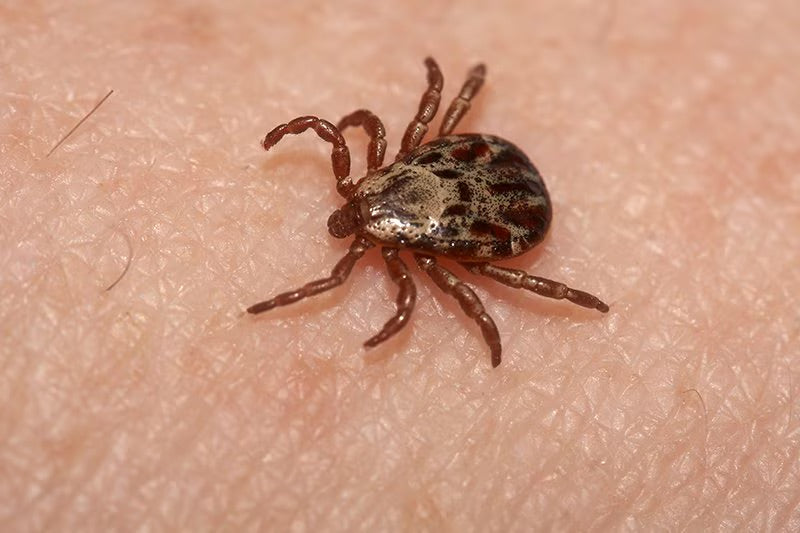
Spring Mountain Hunts and Ticks: How to Stay Safe While Chasing Bears and Turkeys
Dennis StokesSpring hunting in the Pacific Northwest (PNW) is one of the most exciting times of the year. As the snow melts and the mountains come alive, many of us eagerly head out to chase bears and turkeys. But amidst the excitement, there's a hidden danger lurking in the grass, shrubs, and rocky slopes — ticks.
These tiny parasites can cause significant health problems if ignored. As backcountry hunters and outdoor enthusiasts, it's crucial to be informed and proactive to ensure our adventures stay safe and memorable. At Initial Ascent, we believe preparation is the key to success — both in your gear and in your personal safety.
Understanding Ticks in the Mountains
Ticks are parasitic arachnids that feed on the blood of mammals, birds, reptiles, and amphibians. They thrive in wooded areas, tall grasses, rocks, and shrubs — exactly the type of environments hunters frequent when glassing for bears or stalking spring gobblers.
Ticks often perch on grasses and brush, waiting for a passing host to latch onto. Spend a few hours on a glassing knob, and chances are you'll find one crawling on you if you're not vigilant.

For a deep dive into tick behavior, check out this tick lifecycle guide from the CDC.
Common Tick Species in Idaho
If you're hunting in Idaho or the broader mountain West, you're most likely to encounter:
-
Rocky Mountain Wood Tick (the most common)
-
American Dog Tick
-
Western Blacklegged Tick (Deer Tick)
-
Brown Dog Tick
Each carries potential health risks, with some more likely to transmit disease than others. Knowing what species you’re up against can help inform your prevention strategy. Here’s an excellent overview of tick species from TickEncounter.
Health Risks Associated with Ticks
Ticks are notorious vectors of disease. Some of the most concerning illnesses transmitted through tick bites include:
-
Lyme disease (caused by Borrelia burgdorferi)
-
Rocky Mountain spotted fever
-
Babesiosis
-
Anaplasmosis
Lyme disease, in particular, is associated with symptoms like fever, fatigue, headache, and a bull's-eye-shaped rash. Left untreated, it can lead to more serious complications involving joints, the heart, and the nervous system.
Learn more about tick-borne diseases from the CDC.
Although I've personally never contracted any of these illnesses, I know hunters who have — and none of them are fun!
How to Prevent Tick Bites in the Backcountry
At Initial Ascent, our team spends countless hours on the mountain each season. Here are the prevention techniques we rely on:
1. Wear Gaiters
Wearing gaiters such as Peax Stormcastle Gaiters can help block ticks from crawling up your pant legs. By creating a simple mechanical barrier, gaiters buy you extra time to spot ticks before they reach the skin.
2. Pre-Treat Clothing and Gear
Use Permethrin-treated clothing and spray your boots, pants, hunting packs, and gaiters for additional protection. Research shows that Permethrin is highly effective against ticks.
3. Stay Vigilant
Constantly glance at your clothing, especially when moving through thick vegetation or sitting on the ground. Studies have shown it can take 18-24 hours after landing before ticks firmly attach, giving you a crucial window to spot and remove them.
4. Perform Tick Checks 2X/Day
Do thorough checks after your hunts and before heading to bed. Pay special attention to:
-
Behind the knees
-
Underarms
-
Waistline
-
Back of neck
-
Scalp and hairline
When possible, use a buddy system to double-check.
5. Use Contractor Bags for Dirty Clothes
Before entering your tent or vehicle, strip down outerwear and seal it inside a heavy-duty contractor bag. This significantly reduces the chance of bringing any hitchhikers back into your sleeping bag — or your truck on the drive home. If you leave them out in the sun for a while, any ticks in the bag will die quickly.
Best Way to Remove a Tick (CDC Recommended)
If you find a tick attached to your skin:
-
Use fine-tipped tweezers.
-
Grasp the tick as close to the skin as possible.
-
Pull upward with steady, even pressure.
-
Clean the area with soap, water, or antiseptic.
-
Do not crush the tick while attached.

For full instructions, visit the CDC’s official tick removal guide.
Conclusion: Stay Tick-Free and Keep Chasing Adventure
Spring hunting in the mountains offers some of the best experiences the PNW has to offer. By staying prepared, you can keep ticks from ruining your hunt. Incorporate simple measures like wearing gaiters, treating your gear with Permethrin, and conducting regular checks to protect yourself.
At Initial Ascent, we design gear built for rugged environments — helping you stay focused on the hunt, not on what’s crawling at your feet. Stay vigilant, stay safe, and enjoy every moment in the hills this Spring.
For more tips on hunting, survival, and staying prepared in the backcountry, check out the Initial Ascent blog.
